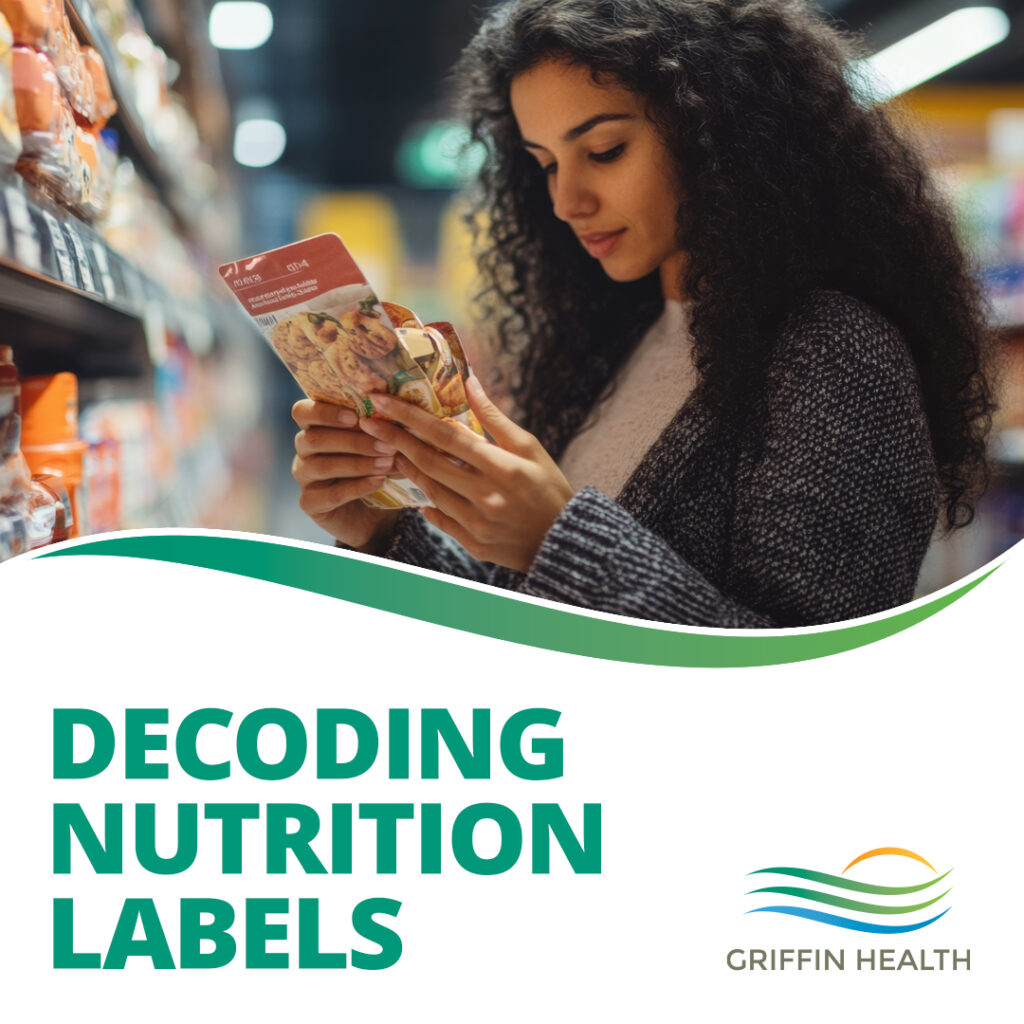
by Griffin Health Communications & Public Affairs Intern Celina Daigle
With so many food choices out there, how can you know if what you are putting into my body is considered healthy or not?
Grocery stores are filled with a variety of frozen, fresh, and packaged foods. Some are processed and others are organic, which can make it a bit overwhelming to navigate eating a healthy diet. The key to understanding what you’re eating is to learn how to properly read nutrition labels provided on food packaging.
Nutrition Labels
Whether you want to lose weight, lower blood pressure, or maintain a healthy diet, it’s best to read what’s in your food. Nutrition labels provide information on serving size, calories, fat, carbohydrates, fiber, sugar, sodium, daily values, and ingredients – all of which are important in a balanced diet. Too much of one or the other can be harmful to your health. For example, consistently choosing foods high in saturated and trans fats can contribute to heart disease. Instead, try choosing foods that are higher in monosaturated and unsaturated fats to reduce the likelihood of developing such disease.
Further your Knowledge
To learn more about how to read nutrition labels and how to balance what you’re eating, watch this educational video by the Griffin Center for Healthy Living:
The Griffin Center for Healthy Living provides our community with the tools for healthier living, emphasizing the three pillars of wellness: health education, physical fitness, and nutrition. For more free health education videos and information about wellness programs at the Center for Health Living, visit www.griffinhealthyliving.org.